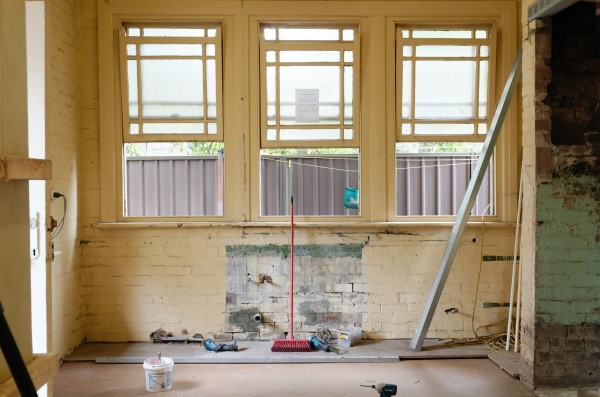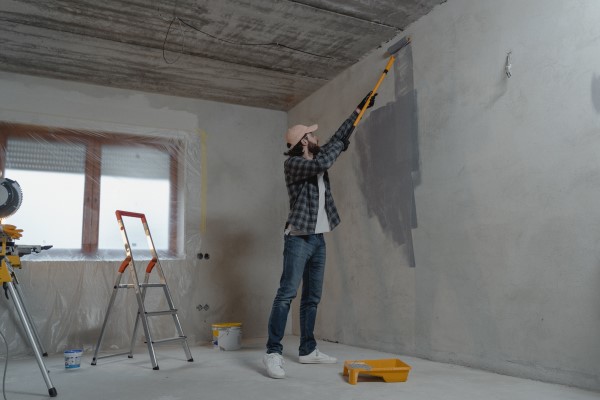Buying a fixer-upper home is currently one of the most popular types of investments in real estate. But there is one catch – you have to do everything by yourself. Additionally, you might even have to rent a place as an alternative living situation. If you’re trying to decide whether to buy a fixer-upper house, you may find this guide valuable, as it can help you see if taking on this project is for you.
If you love old houses and DIY projects, then buying a fixer-upper home might be just the right thing for you. Just imagine buying a run-down property, repairing it, investing your time, money, and creativity, and ending up with a beauty worth much more than what you paid for it. But, first things first, there are a few things you need to pay attention to.
1. Setting a budget
This is the essential thing. According to The Porch, only 52% of home renovation projects finish on budget, making it difficult to calculate the costs. That’s why you have to make sure you have enough money for the repairs and be realistic about how much you can set aside. Consulting with a home inspector or general contractor might help you figure out how much work is needed, which will, in turn, give you a better understanding of all necessary expenses.
Another important thing you should consider when deciding on a budget is – will you be able to live in the house while it’s under construction? If the answer is yes, you will save on rent, and, more importantly, you will be able to keep an eye on the work. However, while renovating, it’s a wise choice to consider renting a storage unit for your belongings (compare storage prices here). You could put your things in the garage or someplace else, but storage units are one of the popular options since they guarantee the safety and protection of your items.
2. Getting permits
Always consult your local officials concerning permits and their costs. Upgrading plumbing, electrical installations, tearing down and moving the walls, etc., require a licensed and insured firm to do the work. That is why it’s crucial to once again talk to your architect or contractor about how they will handle the approval process. Building without the proper permits is cheaper, but it might cause difficulties when it comes to selling the house in the future. But be warned – this process can be frustrating, as the inspectors might not give you their permission straight away.
3. Identify your DIY skills
DIY home improvement is usually the most cost-effective route. Apart from all the tools and equipment, you will also need a certain level of home repair and DIY renovation experience. If you have the skills to hang cabinets, paint, build decks, replace windows and install shelves, you will be able to save a substantial amount of money.
On the other hand, if you are not the hands-on type and not willing or able to do most of the work on your own, you should probably stay away from buying a fixer-upper home. Remember, hiring someone to do everything will probably cost you a lot more than you’re ready to set aside.
4. How much time are you willing to invest?
Another major consideration – how much time will it take? Let’s face it, renovating a fixer-upper can take a considerable amount of both money and time, and it’s more than a slight inconvenience. All those TV shows renovate a house in a one-hour episode, but they don’t talk about how much time it actually takes. It’s one thing to buy a fixer-upper where all the work can be done in no time by investing in minor cosmetic projects, but it’s a totally different thing if your new house has some serious structural issues. The average rehab might take up to five or six months.
5. Plan for complications
We’re not going to lie – the process often tends to be exhausting, time-consuming, and unpredictable. Many problems may emerge after buying a fixer-upper house, and guess what? The TV doesn’t tell you anything about that either.
Acknowledging the possibility that things might start going wrong at the worst possible time is imperative. Take the disclosure with a grain of salt; you never know what might be hiding in between the lines.
Pros and cons of buying a fixer-upper home
If you’re the type of person who likes things shortlisted, here is a list of pros and cons for buying a fixer-upper house and taking on a major renovation project:
PROS
- Lower purchase price;
- Tax savings – less tax is paid on a fixer-upper than a higher-priced move-in ready home;
- Less competition;
- Opportunity to customize your home;
- Quality control;
- Control of where your money goes;
- Increased property value.
CONS
- Going over budget;
- Expensive renovations;
- Unexpected issues;
- Paying rent and mortgage at the same time;
- A long-term project that might take longer than expected.
In conclusion
The bottom line is – there is no perfect fixer-upper. It all depends on your preferences and the willingness to invest time and money. Still, you ought to remember a few things – every house is a story for itself, and almost everything is fixable. Buying a fixer-upper home and renovating it is one of the most fulfilling things you can do. So, enjoy making that fixer-upper a home that is perfect for you.










